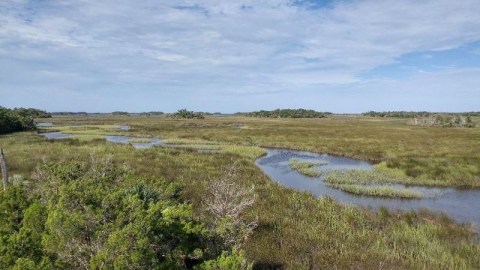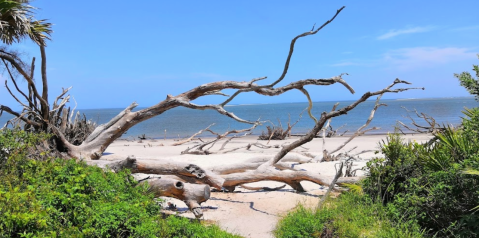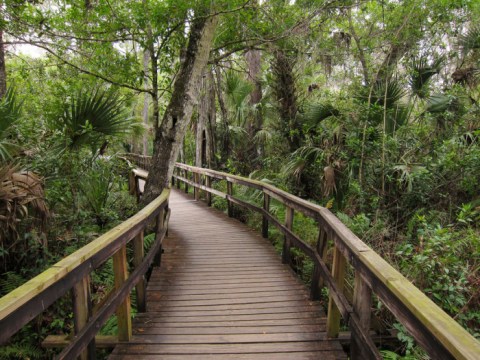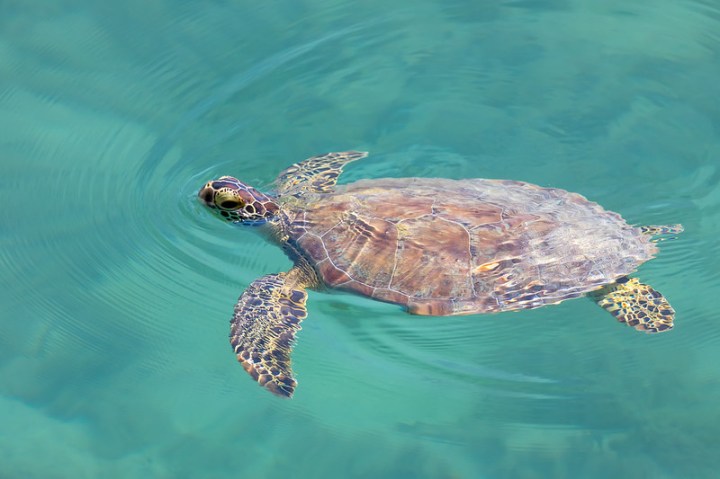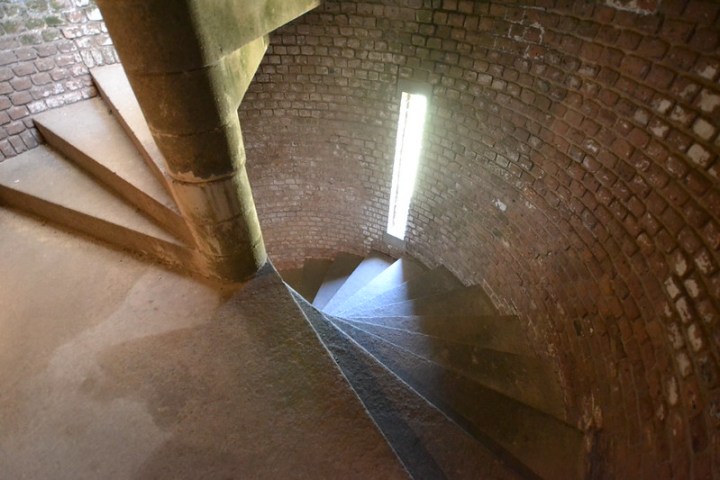The Ultimate Guide To Florida’s Dry Tortugas National Park
Dry Tortugas National Park is one of the most remarkable parks in the western hemisphere. The history of this area dates back to the 1500s when Ponce de Leon was said to have discovered the island chain where he caught over 100 sea turtles. But over the years, this island park has become a true gem of the south, with visitors arriving by ferry or seaplane to explore the expanse. Known for impeccable natural beauty, coral reefs, vast wildlife, beautiful beaches, and a wide variety of fun and activities both inside and outside of the water, this is one national park experience you won’t soon forget.
What makes Dry Tortugas National Park special?

Florida is lucky to have more than a handful of national parks within state lines, including what some might say is the most tropical. Dry Tortugas National Park is just 70 miles west of Key West and unique compared to the 10 other Florida National Park counterparts.
For starters, Dry Tortugas National Park is 100 square miles of mostly open water, with seven small islands included. A road trip to and from this national gem is out of the question! The turquoise shimmering water of this national park, paired with the opportunity to camp on the shoreline and snorkel just a few steps from your campsite, makes this park a truly special place. Plus, did we mention that this is one of the most unique eco-attractions in the entire world? Just make sure to bring your sunscreen.
Beyond just finding transportation to and from the island, there is also a historical element to Dry Tortugas National Park that makes it special. The park is the home of the historic Fort Jefferson, one of the largest 19th-century forts in the United States. For anyone wondering, “is Dry Tortugas worth it?” just wait until you see all there is to offer in this uniquely beautiful collection of islands.
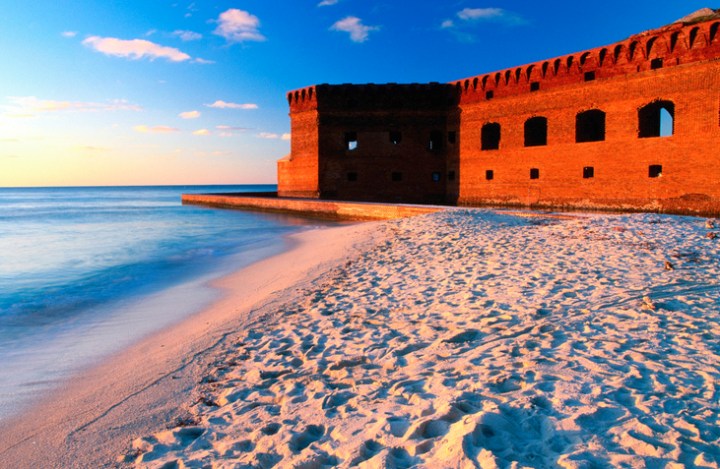
How To Get To Dry Tortugas National Park
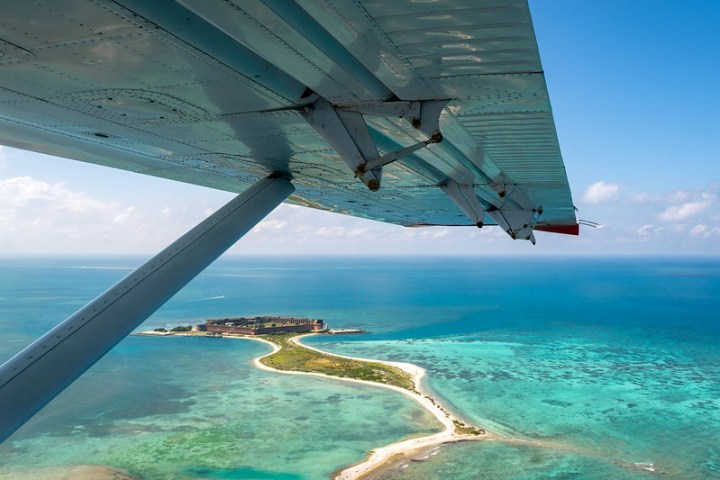
Entrances
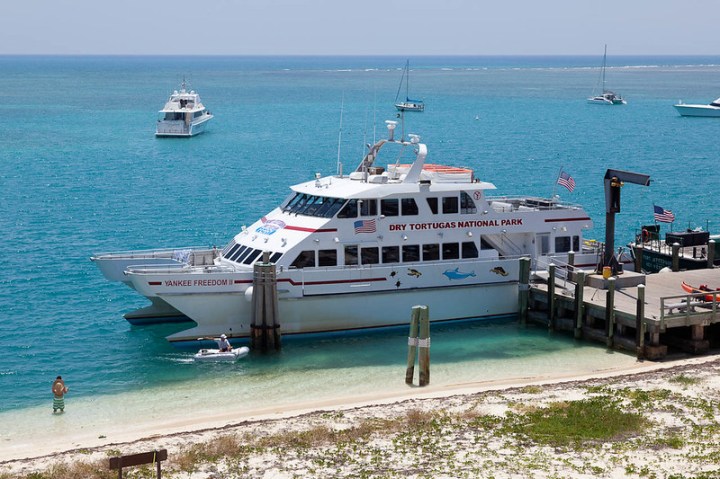
Another way to enter the remote island off of Key West is by a chartered seaplane. Courtesy of Key West Seaplane Adventures, the only seaplane service to Dry Tortugas National Park, visitors can arrive on the island much faster than the ferry. Also, imagine flying into this tropical gem and landing on the clear blue water — sounds like pure scenic perfection. The half-day excursion for four hours from Seaplane Adventures costs between $250 and $400 per person, while the full-day excursion for eight hours costs between $515 and $650 per person. The seaplane to Dry Tortugas will charge entrance fees to park upon arrival.
Also, for anyone who owns their own boat and would like to visit Dry Tortugas, you don’t need to consider boarding the Yankee Freedom III. Whether adventuring over from Miami or directly from Key West, having a private boat to explore the clear waters of the Caribbean and beyond is an excellent option. Ensure you understand the rules and regulations of mooring a private vessel within the U.S. National Parks system. NPS Dry Tortugas has more information on private boat access.
Visitor Centers, Hours & Fees
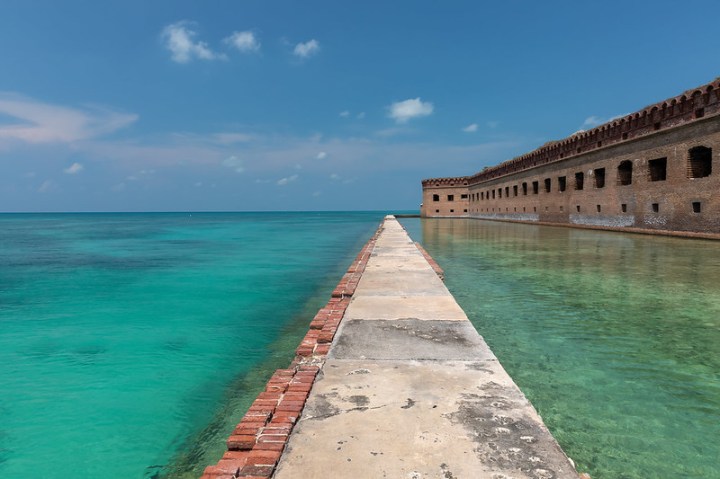
Garden Key, the main key, is open year-round, 24 hours a day. The Garden Key Visitor Center is open every day from 8:30 a.m. to 4:30 p.m. Fort Jefferson, on Garden Key, is open year-round from sunrise to sunset.
Best Time To Visit Dry Tortugas National Park
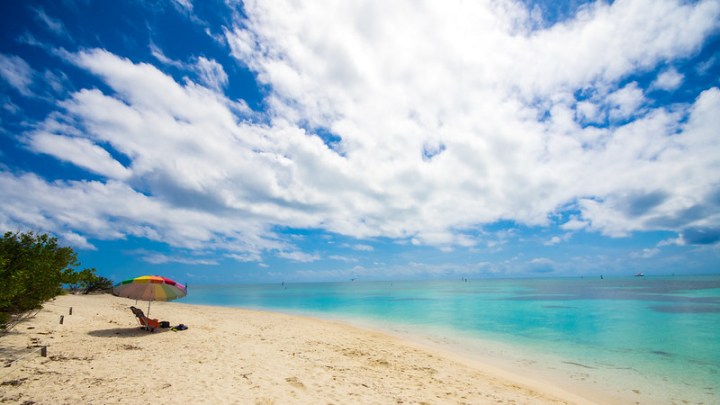
In addition, the high temperatures of visiting in December, which usually fall around 80 degrees Fahrenheit during the daytime, make it an enjoyable winter destination.
Where To Stay In Dry Tortugas National Park
Camping
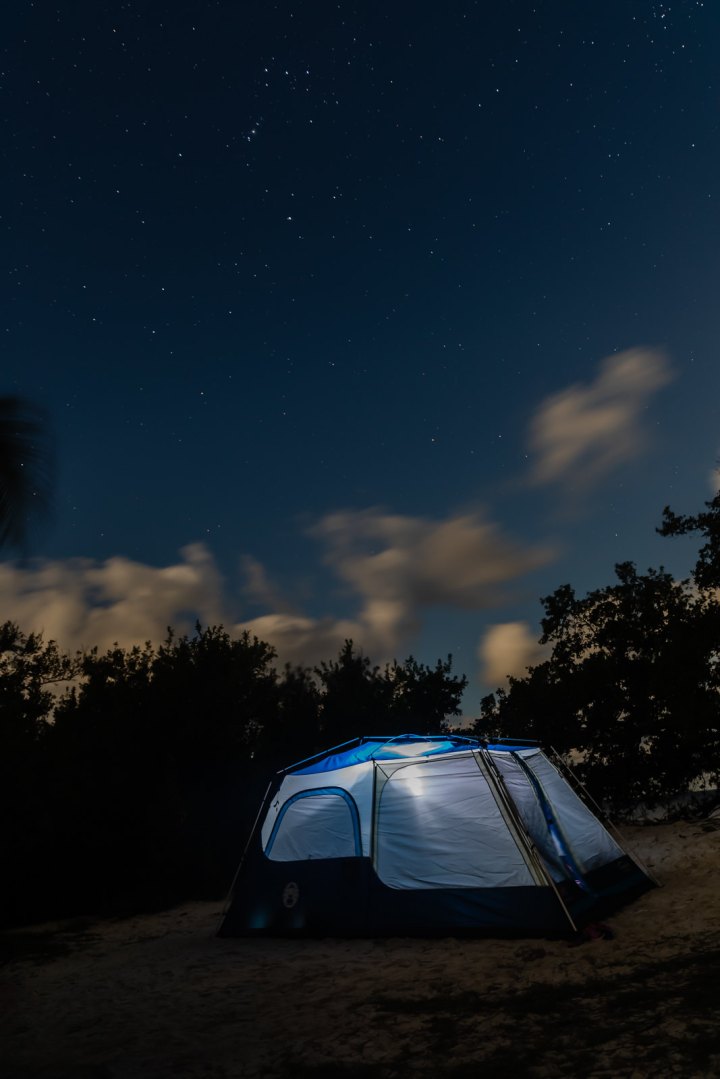
Just be forewarned, camping packages do sell out months in advance as camping in Dry Tortugas is limited due to space. Visitors may be required to add their names to the Dry Tortugas National Park waitlist for a secured campsite.

Camping at Dry Tortugas National Park offers self-service fees found via the park ranger upon arrival. Fees can be paid only by check or cash. Individual sites cost a nightly fee of $15 per site or $30 per night for a large group site.
Cabins & Lodges

Places To Stay Near Dry Tortugas National Park
Because Dry Tortugas National Park is considered a more remote island, there aren’t too many places to stay nearby. However, when ferrying or flying to and from Key West, staying in this area is likely the best lodging choice. Key West has a wide variety of hotels, motels, Airbnb, and VRBO options for staying overnight.
Things To Do In Dry Tortugas National Park
Dry Tortugas National park offers countless opportunities to enjoy the great outdoors, including snorkeling, touring the historic Fort, fishing, and swimming. You can even take a kayak out and adventure around the fort via the water!
Hiking In Dry Tortugas National Park
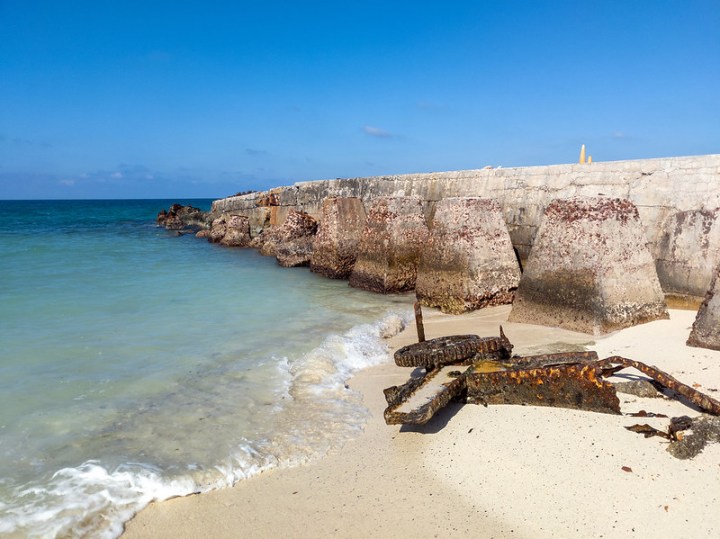
Snorkeling In Dry Tortugas National Park

This park system is situated on the southwestern corner of the Florida Keys reef system, the third largest reef system on Earth. Because of these reefs and the clarity of the water, snorkeling has become a coveted reason to visit this park. Visitors to Garden Key via the ferry will have access to snorkel gear. Otherwise, it’s always safe to bring your own. Various snorkeling spots provide excellent reef and wildlife viewing, including the Moat Wall, Texas Rock Coral Reef, Coaling Pier Pilings, and the Windjammer (Avanti) shipwreck off Loggerhead Key. As the most popular dive in the park, the Windjammer was built in 1875 and is a three-masted, iron-hulled sailing ship that was wrecked in 1901. Today visitors can pick up an underwater map at the visitors center to enjoy a self-guided tour of the wreck. Before you visit, contact the National Park Service (NPS) for information about closures.
Fort Jefferson in Dry Tortugas National Park
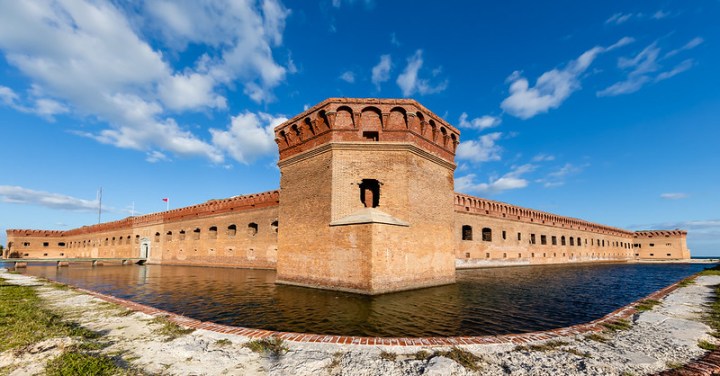
Visiting Fort Jefferson in Dry Tortugas National Park is a must for anyone who steps onto the island. As one of the nation’s largest 19th-century forts, Fort Jefferson was originally built to protect and fortify a spacious harbor for ships patrolling the Gulf of Mexico. Exploring this coastal fortress, the largest brick masonry structure in the Americas and a Civil War icon, makes for an exciting afternoon. The fort covers 16 acres and is composed of over 16 million bricks. At its height, the fort had 2,000 inhabitants as soldiers marched and trained nearby and laborers worked under the sun to complete the build. However, due to storms, harsh weather, and shifting sands, the fort’s weight couldn’t hold, and the building was essentially incomplete.
Visitors can enjoy a 45 to 60-minute guided tour of the fort as soon as they land on Garden Key via the Yankee Freedom ferry. However, there is also an option for a self-guided tour of the Fort provided by the NPS, which can be downloaded to a phone or tablet.
A few highlights from exploring Fort Jefferson include large, advanced weaponry, soldiers’ barracks, masonry mounds (or traverses), and gunrooms. Also, the Dry Tortugas lighthouse, now known as the Loggerhead light, is another fan favorite. Located at one of the bastions of Fort Jefferson, visitors can get an up-close look at the lighthouse that has been around since the early 1800s.
Fees for entering and touring Fort Jefferson are included in the $15 cost per person to enter Dry Tortugas National Park.
Dry Tortugas National Park Wildlife
One of the major draws of visiting Dry Tortugas National Park is viewing some of the best above and underwater wildlife. With a diverse ecosystem and marine life, guests can enjoy birds and sea turtles, plus reef creatures galore. Fishing Dry Tortugas is an option, too, but only in certain areas of the park. Anglers must comply with federal and state fishing rules and regulations.
The Dry Tortugas islands were originally called “Las Tortugas,” the Spanish name given to the islands for the sea turtles commonly found nearby. You’ll likely find two common nesting sea turtles in Dry Tortugas: green and loggerhead. Remember, if you are lucky enough to spot one of these turtles within the park, keep your distance and do not disturb the nest.
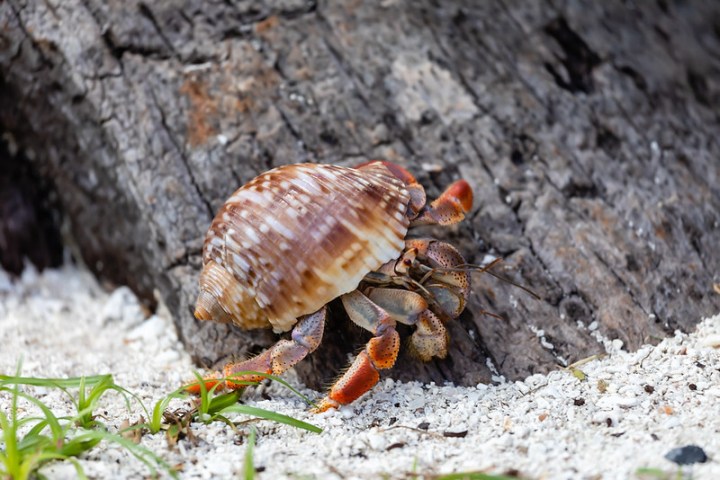
The ancient coral reefs deserve to be explored within the islands, with hundreds of species of marine animals living just below the water’s surface. Beauty abounds with chances to spot sharks, sea turtles, lobsters, octopuses, reef fishes, and more.
Birdwatchers will also find abundance in Dry Tortugas, as this national park is considered a world-class birding locale. This is especially the case during the spring migration! Nearly 300 hundred different birds have been spotted in the Dry Tortugas, including birds like the frigate bird and sooty tern. These two birds do not nest anywhere else in the United States, which means seeing them in the park is a real treat. Birders may even have the chance to spot the elegant White-tailed Tropicbird, which, if so, is a true rarity.
Need To Know Information About Dry Tortugas National Park
Accessibility: Dry Tortugas National Park does strive to make visiting accessible to everyone. Fort Jefferson is accessible to wheelchairs on the first tier and brick walkways outside the fort. However, the fort’s upper second and third floors are not wheelchair accessible. The Yankee Freedom ferry does have lifts at the dock to help assist people onto the boat in Key West and off the boat at Garden Key. Visitors must provide advanced notice to the ferry to set up for passengers requiring assistance.
Pet Friendly: Dry Tortugas National Park is pet-friendly with NPS stipulations. Pets are permitted only on Garden Key but not inside Fort Jefferson or any other key in the park. Pets must be on a leash and under physical control at all times.
OnlyInYourState may earn compensation through affiliate links in this article. As an Amazon Associate, we earn from qualifying purchases.




